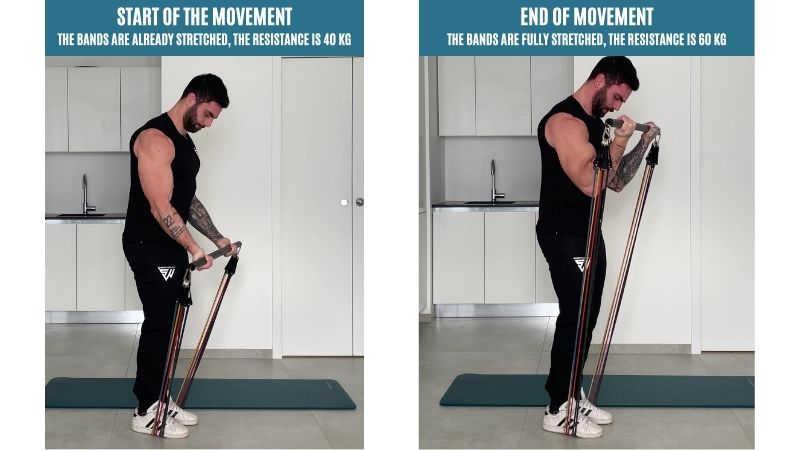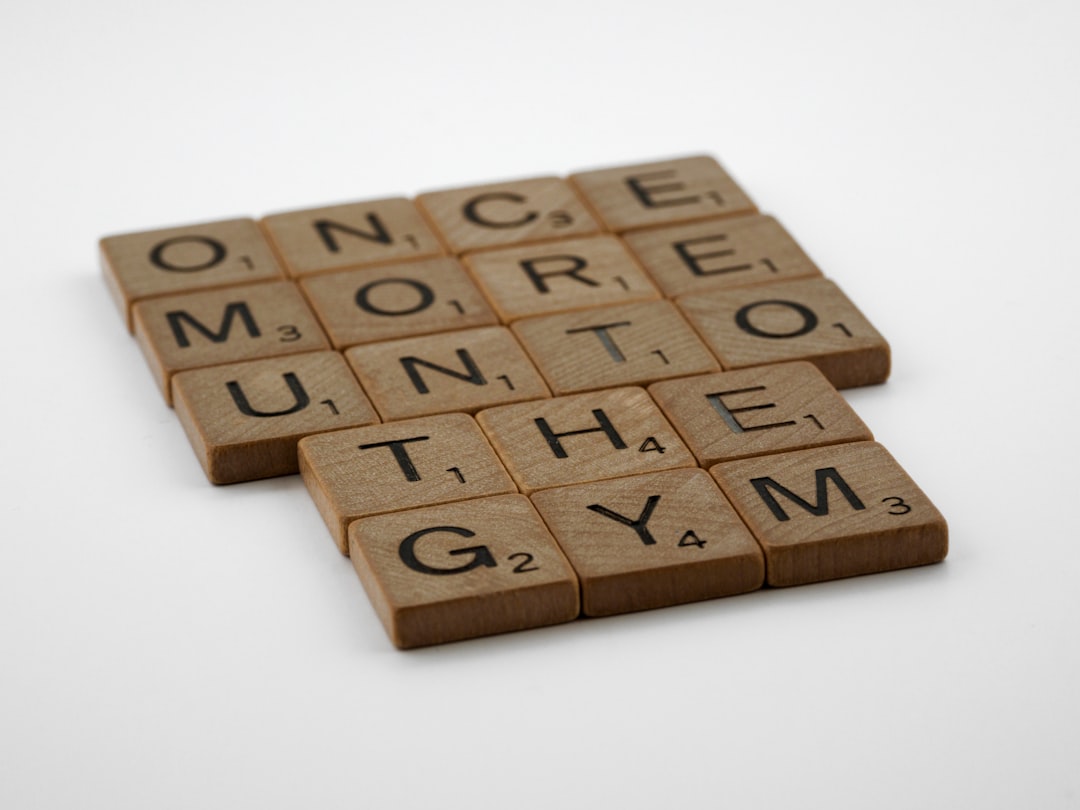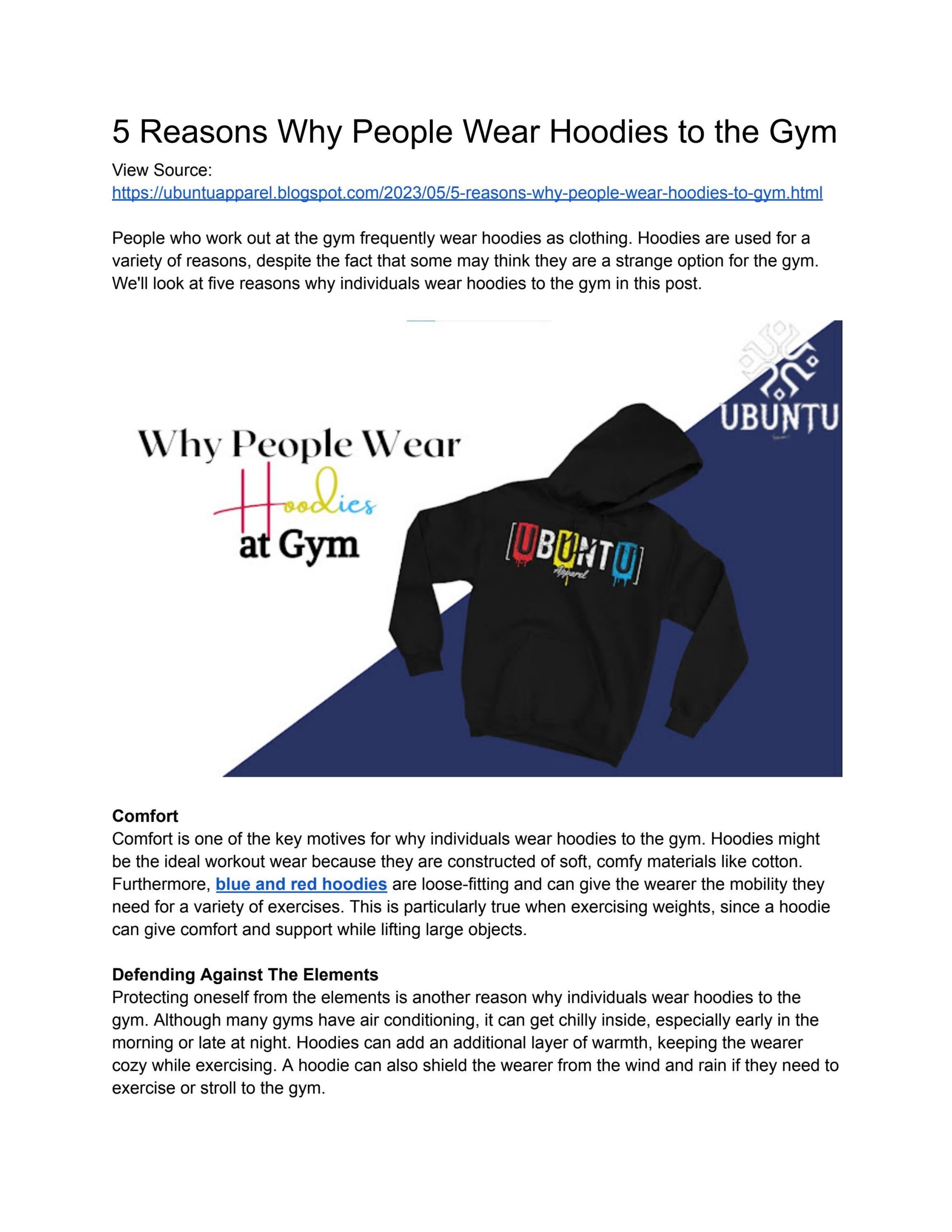Picture yourself at the gym, surrounded by towering weights and high-tech machines. It can feel overwhelming, especially if you’re new to working out.
But what if you could build muscle effectively without all the heavy lifting? Enter resistance bands. These simple, portable, and affordable tools have taken the fitness world by storm. But do they really help in building muscle, or are they just another fitness fad?
We’ll delve into the science and practicality behind resistance bands, uncovering whether they truly have the power to transform your strength training routine. Stick around to discover how you can maximize your muscle-building potential with these versatile bands, and why they might just become your new favorite workout companion.
Resistance Bands And Muscle Growth
Resistance bands can build muscle effectively by providing constant tension. They engage multiple muscles, enhancing strength and flexibility. Versatile and portable, these bands offer a convenient workout option for both beginners and advanced users.
Resistance Bands and Muscle Growth Have you ever wondered if those colorful resistance bands can really help you build muscle? You’re not alone. Many fitness enthusiasts question their effectiveness compared to traditional weights. Surprisingly, resistance bands can offer a unique approach to muscle growth. Let’s dive into how they work and why they might be a game-changer for your workout routine.Understanding Resistance Bands
Resistance bands come in various shapes, sizes, and resistance levels. They work by providing tension throughout the entire movement. This means your muscles are engaged during the contraction and extension phases. Unlike dumbbells, the resistance isn’t reliant on gravity. This can help target different muscle fibers, promoting growth in unexpected ways.The Science Behind Muscle Growth
Muscle growth occurs when muscle fibers are broken down and rebuilt stronger. Resistance bands excel at this process due to their ability to maintain consistent tension. According to research, this constant tension can lead to increased muscle activation. With consistent use, you might notice improved muscle endurance and size.Personal Experience: Resistance Bands In Action
Years ago, I was skeptical about swapping my weights for bands. However, incorporating them into my routine led to noticeable changes. My core felt stronger, and my arms looked more toned. I found bands especially useful for targeting smaller muscle groups. Their portability allowed me to sneak in workouts anytime, anywhere. Have you tried them yet?Practical Tips For Using Resistance Bands
Start by selecting bands with varying resistance levels. This will allow you to gradually increase tension as your strength improves. Focus on controlled movements to maximize muscle engagement. Experiment with exercises like squats, bicep curls, and lateral raises. Consider pairing bands with free weights for a hybrid workout. This combination can amplify your results and keep your routine exciting.Are Resistance Bands Right For You?
Think about your fitness goals. Are you aiming for muscle endurance or trying to bulk up? Bands might be perfect if you’re looking for versatility and convenience. They offer a low-impact option that reduces the risk of injury. Plus, they’re budget-friendly and take up minimal space. What’s holding you back from giving them a try? Resistance bands might not replace weights entirely, but they can be a valuable addition to your muscle-building toolkit. Give them a chance and see how your body responds.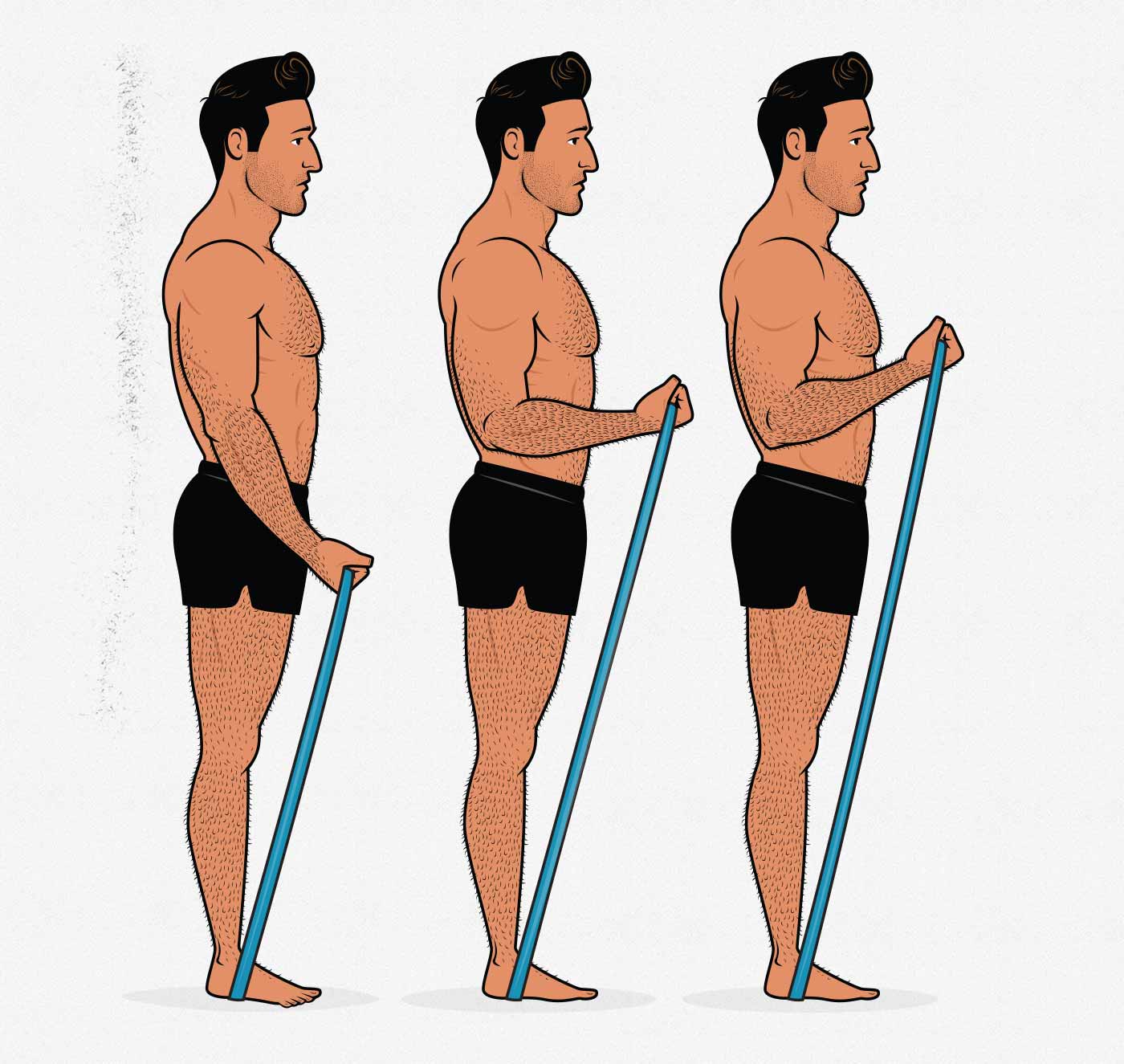
Credit: bonytobeastly.com
Types Of Resistance Bands
Resistance bands are a fantastic tool for building muscle. They’re versatile, portable, and surprisingly effective. But did you know there are different types of resistance bands, each with its own benefits? Choosing the right type can enhance your workout experience.
Understanding the different types of resistance bands can help you tailor your workouts to your needs. Whether you’re a beginner or a seasoned athlete, there’s a band for you.
Loop Bands
Loop bands are continuous loops of elastic material. They’re great for lower body workouts like squats and lunges. I remember using loop bands during a hotel stay when I didn’t have access to a gym. They were compact and easy to pack, yet provided a challenging workout for my legs.
Tube Bands
Tube bands come with handles, making them ideal for upper body exercises. You can simulate movements like bicep curls or tricep extensions. Have you ever tried substituting dumbbells with tube bands? It’s a unique challenge that can add variety to your routine.
Figure 8 Bands
Figure 8 bands are shaped like an eight and often have soft grips. They’re excellent for targeting smaller muscle groups. Imagine focusing on those hard-to-reach muscles without needing bulky equipment. That’s the power of figure 8 bands.
Therapy Bands
Therapy bands are flat and usually thinner. They’re commonly used in rehabilitation settings. They offer gentle resistance, which can be perfect for beginners or those recovering from injuries. Have you considered how these bands can help you ease back into fitness?
Benefits Of Knowing Your Bands
Choosing the right type of resistance band can optimize your workouts. You can target specific muscle groups more effectively. Plus, switching between bands keeps your routine exciting and challenging.
Next time you plan your workout, think about the bands you’ll use. Are you making the most of the variety available? Your muscle-building journey can be as dynamic as you want it to be.
How Resistance Bands Work
Resistance bands work by providing varying levels of resistance during exercises. These bands engage multiple muscles, promoting muscle growth effectively. They are portable and versatile, making them suitable for different workouts and fitness levels.
Resistance bands might seem simple, but they are powerful tools for muscle building. You might wonder how these stretchy bands can replace the heavy weights at the gym. The secret lies in how they work. They offer a unique form of resistance, challenging your muscles differently than traditional weights. Let’s dive into the mechanics of resistance bands and how they can help you build muscle effectively.Understanding Resistance
Resistance bands create tension throughout the entire movement of an exercise. Unlike weights, which rely on gravity, bands provide constant resistance. This means your muscles are engaged from start to finish. Imagine doing a bicep curl. With weights, the hardest part is lifting the weight. But with bands, your muscles work hard both when pulling and releasing, maximizing muscle engagement.Variable Resistance
The beauty of resistance bands is their ability to offer variable resistance. As you stretch the band further, the resistance increases. This means your muscles face more challenge as the band elongates. It’s like having a workout that adapts to your strength. Consider the last time you stretched a rubber band—did you notice how much harder it was to stretch it far? Your muscles experience this same increasing challenge.Joint-friendly Exercises
Resistance bands are gentle on your joints. The smooth tension avoids the jerky movements sometimes associated with weights. This makes them ideal for people with joint pain or those recovering from injury. Picture your knees thanking you after a squat workout with bands instead of weights. They offer a workout that’s both effective and kind to your body.Versatility And Convenience
Their versatility is unmatched. You can target virtually any muscle group using these bands. They are compact and travel-friendly, allowing you to maintain your workouts wherever you are. Think about packing them for a vacation or using them for a quick session at home. Have you ever found yourself wanting to work out but couldn’t access the gym? With bands, you can exercise anytime, anywhere.Progressive Overload
To build muscle, you need to challenge your body continually. Resistance bands allow for progressive overload by using stronger bands or increasing repetitions. You can gradually increase the challenge, pushing your muscles to grow. Remember the last time you increased the weights at the gym? Bands allow you to do the same, but with flexibility and ease. Resistance bands are not just a substitute for weights; they are a unique tool that offers diverse benefits for muscle building. Have you tried using bands in your workout routine? You might be surprised by the results.Benefits Of Resistance Bands
Resistance bands have gained popularity in the fitness community. They’re effective tools for muscle building. Their benefits extend beyond just strength training. Resistance bands offer unique advantages that cater to diverse workout needs. They enhance muscle growth and provide convenience and versatility.
Portability And Convenience
Resistance bands are lightweight and easy to carry. You can fit them in a small bag or suitcase. They’re perfect for home workouts or travel. You don’t need bulky equipment. Just grab your bands and start exercising anywhere. This makes them ideal for those with a busy lifestyle.
Versatility In Workouts
Resistance bands cater to different fitness levels. Beginners and advanced users find them useful. They allow a variety of exercises. You can target all muscle groups. Upper body, lower body, and core exercises are possible. Adjust the band’s tension to increase or decrease difficulty. This flexibility keeps workouts interesting and effective.
Joint-friendly Exercise
Resistance bands offer low-impact workouts. They’re gentle on joints and reduce injury risk. People with joint issues find them beneficial. The bands provide controlled resistance, which minimizes strain. This makes them suitable for rehabilitation exercises as well. Enjoy muscle building without stressing your joints.
Comparing Resistance Bands And Free Weights
When it comes to building muscle, fitness enthusiasts often find themselves weighing the pros and cons of resistance bands versus free weights. Each offers unique benefits, and understanding the differences can help you decide which tool is best for your fitness journey. Whether you’re a seasoned gym-goer or just starting out, having insights into the intensity, range of motion, and cost can make your workout routine more effective and enjoyable.
Intensity And Resistance Levels
Resistance bands provide a unique kind of tension. As you stretch the band, the resistance increases, offering a dynamic challenge. This means you can adjust the difficulty simply by changing your grip or the band’s length. Free weights, on the other hand, offer a consistent level of resistance throughout the movement. This can be beneficial for tracking progress and ensuring a set level of intensity.
Consider your goals. Do you prefer the steady challenge of weights, or the variable tension of bands? Both can build muscle effectively, but your preference might dictate your choice. You might find that bands offer a new challenge that keeps your muscles guessing.
Range Of Motion And Control
Resistance bands excel in offering a greater range of motion. They allow you to engage muscles that are often overlooked with free weights. Think about exercises like lateral raises or chest flies—bands can help you extend your range and target smaller muscle groups. Free weights, however, can offer better control due to their solid structure. This might be crucial for exercises requiring precision, like deadlifts.
Have you ever felt limited by equipment at the gym? Bands give you the freedom to move in various directions, adapting to your body’s natural movements. This flexibility can enhance your workout by reducing strain and increasing engagement.
Cost And Accessibility
Resistance bands are incredibly affordable and portable. You can easily pack them in a bag and take them anywhere, making them ideal for home workouts or travel. Free weights tend to be more expensive, and their bulkiness can make them less convenient for those on the move.
Imagine doing a full-body workout in your living room without needing a rack of dumbbells. Bands offer versatility without the hefty price tag. If budget and space are concerns, they might be your best bet.
In weighing these factors, consider what fits your lifestyle best. Do you want convenience and affordability, or do you prioritize consistent intensity and control? Your decision could shape your fitness journey in exciting ways.
Effective Exercises With Resistance Bands
Resistance bands can help build muscle by providing tension and resistance during workouts. These bands are versatile and effective for strength training. They work by targeting different muscle groups, enhancing endurance and flexibility. Perfect for all fitness levels, they make muscle building accessible and convenient.
Resistance bands are more than just colorful loops of latex—they’re a powerhouse tool for building muscle. These bands offer a versatile and cost-effective way to target different muscle groups without the need for heavy weights. With the right exercises, you can effectively use resistance bands to enhance your strength and fitness routine.Upper Body Workouts
Resistance bands can work wonders for your upper body. Imagine sculpting your arms, shoulders, and back with just a simple piece of equipment. Try seated rows: Sit on the floor with your legs extended, loop the band around your feet, and pull the ends towards you. This exercise targets your upper back and biceps. For your chest, consider band push-ups. Place the band across your back and hold the ends in your hands while doing push-ups. This adds extra resistance, making your chest work harder.Lower Body Workouts
Don’t underestimate the power of resistance bands for your lower body. They can be particularly effective for leg and glute exercises. Squats with bands are a great start. Stand on the band with feet shoulder-width apart and hold the ends at your shoulders. As you squat, the band adds tension to your quads and glutes. Lateral band walks are another excellent exercise. Place the band around your legs just above your knees, and step side to side. This movement strengthens your hips and thighs, improving stability and balance.Core Strengthening Exercises
A strong core is crucial for overall fitness. Resistance bands can help you engage these muscles effectively. Try a banded plank. Wrap the band around your wrists or ankles, and hold a plank position. The band forces your core to stabilize more than usual. Russian twists with a band add a twist to your core workout. Sit on the floor with knees bent, hold the band taut, and twist your torso from side to side. This targets your obliques, giving you a well-rounded core workout. Have you ever tried these exercises with resistance bands? They might seem simple, but they pack a punch. Next time you work out, consider incorporating resistance bands and feel the difference. Do you think these exercises could be a game-changer in your fitness routine? Give them a try and see for yourself.Tips For Maximizing Results
Resistance bands can effectively build muscle by providing consistent tension during exercises. Focus on controlled movements to enhance muscle growth. Vary your workout routine to challenge different muscle groups and improve strength.
Building muscle with resistance bands is not only possible but also highly effective when approached with the right techniques. You might wonder how to get the most out of these versatile tools. Whether you’re a beginner or a seasoned athlete, applying certain strategies can significantly enhance your results. Let’s dive into some practical tips that can make a difference in your workout routine.Progressive Overload Techniques
To build muscle, your muscles need to be challenged consistently. Progressive overload is the key. This means gradually increasing the tension or resistance over time. Try using thicker bands or doubling them up to increase resistance. You can also alter your tempo. Slow down the eccentric phase of your exercises, like when lowering a band during a bicep curl, to boost muscle tension. This simple tweak can make your workouts more effective. Another method is to increase the number of reps or sets. Start with a baseline, like three sets of 10 reps, and gradually add more as your strength improves. This ensures continuous muscle growth and adaptation.Incorporating Bands Into Routine
Think of resistance bands as more than just a warm-up tool. They can replace or supplement traditional weights for almost any exercise. Bands are great for compound movements like squats and deadlifts, offering a new kind of resistance. Add bands to bodyweight exercises for an extra challenge. For instance, loop a band around your knees during squats to engage your glutes more intensely. This variation can increase muscle activation and growth. Swap out one or two gym sessions each week with a band workout. This variation keeps your muscles guessing and prevents workout boredom. Have you considered how versatile bands can be when traveling? They fit easily into any bag, allowing you to maintain your routine on the go.Tracking Progress And Adjustments
Keeping a workout journal is crucial. Document the exercises, resistance levels, reps, and sets you complete. This allows you to see your progress over time and make necessary adjustments. Use a simple table to track your workouts:| Exercise | Resistance Level | Reps | Sets |
|---|---|---|---|
| Bicep Curl | Medium Band | 12 | 3 |
| Squats | Heavy Band | 15 | 4 |
Credit: www.reddit.com
Common Myths Debunked
Resistance bands effectively build muscle by providing constant tension throughout exercises. They engage stabilizer muscles often overlooked by free weights. Many underestimate their potential, but bands can enhance strength and endurance significantly.
Resistance bands have gained popularity, yet many myths surround their effectiveness in building muscle. Some believe they’re inferior to weights, while others think they’re only good for stretching. It’s time to set the record straight and explore the truth behind these versatile tools.Resistance Bands And Muscle Size
Contrary to popular belief, resistance bands can contribute to muscle growth. They offer variable resistance, which means they can challenge your muscles differently than free weights. Imagine doing a bicep curl with a band. As you pull, the tension increases, requiring more effort at the top of the movement. This can lead to muscle hypertrophy, the process of enlarging muscle fibers. When used correctly, bands can engage your muscles throughout the entire range of motion. Isn’t that what you need for effective muscle building?Effectiveness For Beginners And Athletes
Resistance bands aren’t just for beginners; they’re effective for athletes too. For newcomers, bands provide a safer way to learn exercises without the risk of dropping weights. Athletes use bands for enhancing performance and muscle endurance. Think about sprinters who use bands for resistance training to improve speed. You can adjust the tension to match your fitness level, making them a versatile tool for everyone. Have you considered how this adaptability could enhance your workouts? Resistance bands are portable, cost-effective, and adaptable. Don’t let myths deter you from adding them to your fitness routine. Wouldn’t it be interesting to see the results you could achieve with them?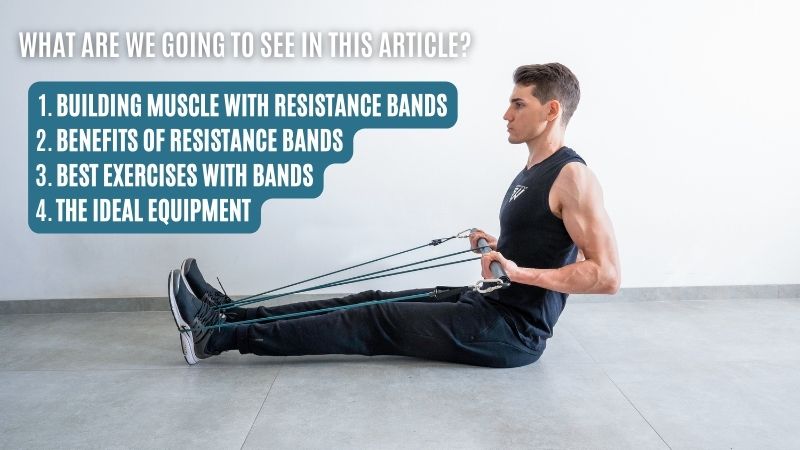
Credit: en.smartworkout-pro.com
Frequently Asked Questions
Can You Build Muscle Mass With Resistance Bands?
Yes, resistance bands can help build muscle mass. They provide tension that stimulates muscle growth. Incorporate varied exercises and increase resistance over time. Consistency and proper form are key to maximizing results. Resistance bands are effective, portable, and versatile, suitable for all fitness levels.
What Are The Disadvantages Of Resistance Bands?
Resistance bands may snap or wear out over time. They provide limited resistance compared to weights. Precise form is crucial to avoid injury. Some exercises might be challenging due to lack of stability. Resistance levels can be inconsistent across brands.
Can You Get Bigger Arms With Resistance Bands?
Yes, resistance bands can help increase arm size. They provide constant tension, aiding muscle growth. Consistent workouts targeting biceps and triceps are effective. Vary exercises and resistance levels for optimal results. Proper nutrition and rest also play crucial roles in building bigger arms.
Is It Better To Train With Resistance Bands Or Weights?
Resistance bands and weights both offer unique benefits. Bands improve flexibility and are portable. Weights enhance strength and muscle mass. Choose based on fitness goals and personal preferences. Mixing both can provide balanced results.
Conclusion
Resistance bands can build muscle effectively. They’re versatile and portable. Perfect for home workouts. Affordable, too. They target different muscle groups. Great for all fitness levels. You can adjust the resistance easily. Increase the challenge as you grow stronger. They offer a full-body workout.
Enhance strength and endurance. Combine them with a balanced diet. Consistency is key. Progress takes time and effort. Keep pushing your limits. Gradually, you’ll see muscle growth. Don’t underestimate their power. A good option for building muscle. Give them a try.
See the difference yourself.


